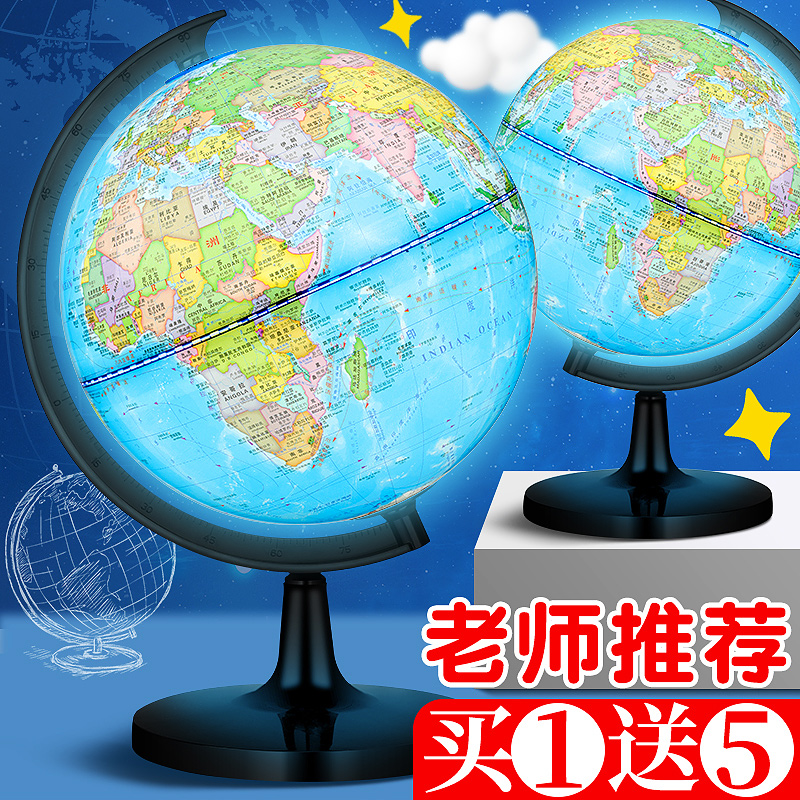地球仪在地理教学中的重要性
峎迥匞
2024-11-10 00:44:58
0次
地球仪在地理教学中的重要性
地球仪,一个形状熟悉且至关重要的教学工具,对于地理教育而言具有不可替代的重要性。它不仅是一个简单的模型,更是学生理解地球、掌握地理知识的关键。在地理教学中,地球仪的重要性体现在以下几个方面。
一、直观展示地球形态与结构
地球仪是直观展示地球形态与结构的工具。它以三维立体的形式,让学生能够清晰地看到地球的形状、大小以及各个大洲、海洋的分布。这样的视觉效果有助于学生更好地理解地理知识,为后续的地理学习打下坚实的基础。
二、辅助理解地理概念
地球仪可以帮助学生更好地理解地理概念。例如,在讲解经纬度、时区等概念时,地球仪可以直观地展示这些概念的具体含义和相互关系。通过观察地球仪上的经纬度线,学生可以更好地理解经纬度的定义和作用,从而更好地掌握这些地理知识。
三、增强地理教学的互动性
地球仪在地理教学中还可以增强教学的互动性。教师可以利用地球仪进行各种教学活动,如小组讨论、角色扮演等,让学生在互动中学习地理知识。此外,学生还可以利用地球仪进行自主学习,如探索未知的地区、研究地理现象等,从而增强学习的主动性和兴趣。
四、培养学生空间想象力
地球仪有助于培养学生的空间想象力。通过观察地球仪上的各个地区、国家、城市等,学生可以形成对地球的整体认知,从而培养他们的空间想象力。这对于学生今后学习地理、了解世界具有重要意义。
五、辅助地理实验教学 地球仪还可以辅助地理实验教学。例如,在讲解气候变化、自然灾害等地理现象时,教师可以利用地球仪模拟这些现象的发生过程,让学生更加直观地了解这些现象的成因和影响。这有助于学生更好地理解地理知识,提高他们的学习兴趣和效率。 六、培养全球意识和跨文化理解 通过地球仪,学生可以了解到世界各地的地理位置、文化、经济等情况,从而培养他们的全球意识和跨文化理解能力。这对于学生今后走向国际舞台、参与国际交流具有重要意义。 七、提高地理学习的趣味性地球仪使地理学习变得更加有趣。学生们可以通过转动地球仪来探索未知的世界,这种互动式的学习方式可以增加学习的乐趣,使学生更加积极地投入到地理学习中。
以上诸点,都是地球仪在地理教学中的重要性体现。综合来看,地球仪是地理教学中不可或缺的教学工具,它能够帮助学生更好地理解地球和掌握地理知识,提高学习的效率和兴趣。因此,在地理教学中,我们应该充分利用地球仪这一教学工具,让学生在学习地理的过程中更加轻松、有趣。 The Importance of the Globe in Geography Teaching The globe, a familiar and crucial teaching tool, plays an irreplaceable role in geography education. It is not just a simple model but a key to understanding the Earth and mastering geographical knowledge. In geography teaching, the importance of the globe is reflected in the following aspects. Firstly, the globe intuitively demonstrates the shape and structure of the Earth. It shows the size, shape, and distribution of continents and oceans in a three-dimensional form, helping students better understand geographical knowledge and laying a solid foundation for subsequent geography learning. Secondly, the globe assists in understanding geographical concepts. For example, when explaining concepts such as latitude and longitude, time zones, etc., the globe can visually show the specific meanings and relationships of these concepts. By observing the lines of latitude and longitude on the globe, students can better understand the definitions and roles of latitude and longitude, thereby better mastering these geographical knowledge.Thirdly, the globe enhances the interactivity of geography teaching. Teachers can use the globe to conduct various teaching activities such as group discussions and role-playing, allowing students to learn geography through interaction. Additionally, students can use the globe for independent learning, such as exploring unknown regions, studying geographical phenomena, etc., thereby enhancing their learning initiative and interest.
Fourthly, the globe cultivates spatial imagination. By observing various regions, countries, cities, etc. on the globe, students can form an overall cognition of the Earth, thus cultivating their spatial imagination. This is of great significance for students' future learning of geography and understanding of the world. Fifthly, the globe assists in geographical experimental teaching. For example, when explaining geological phenomena such as climate change and natural disasters, teachers can use the globe to simulate the occurrence process of these phenomena, making it more intuitive for students to understand the causes and impacts of these phenomena. This helps students better understand geographical knowledge and improves their learning interest and efficiency. Sixthly, the globe cultivates a sense of global awareness and cross-cultural understanding. Through the globe, students can learn about the geographical locations, cultures, economies, etc. of different parts of the world, thereby cultivating their sense of相关内容
热门资讯
儿童学习必备:如何选择合适的地...
摘要:选择适合儿童的地球仪和文具至关重要,应考虑用途、尺寸、质量、精度和孩子年龄等因素。铅笔、橡皮、...
探索未知的地球:地球仪在科学学...
地球仪在科学学习中价值巨大,特别是地理教学和科学研究中。其以立体形式展示地球信息,可直观了解地理特征...
"为学习添彩:十种必选的学习用...
文章介绍十种必选学习用品,如铅笔、钢笔、彩色笔等,并探讨它们与地球仪的配合使用方法,如地图与地球仪印...
学习用品中的佼佼者:多功能地球...
本文为多功能地球仪的选购指南,重点从尺寸材质、功能特点、精确度和质量、品牌价格等方面介绍如何挑选。地...
"科技与传统并存:10款顶级学...
科技与传统结合,10款学习用品与地球仪搭配,如电子书、平板、智能笔等,提供直观、互动的地理学习体验,...
探索地球奥秘:从学习用品到地球...
旅程探索地球奥秘:从学习用品至地球仪,深入发现未知,了解地形、气候和地球运行规律,挖掘无尽奥秘。地球...
地球仪:探索世界的窗口
地球仪作为探索世界的窗口,不仅提供地理信息,还是教学和艺术创作的宝贵资源,并在日常生活、旅行规划、商...
探索学习用品的新世界:地球仪与...
本文探讨了地球仪的魅力、在日常生活和教育、旅游、科研等领域的作用及未来发展。地球仪作为学习用品,融合...
学习者的好助手:全面了解学习用...
文章概述了学习用品如文具和电子设备的重要性,以及地球仪在了解地理环境方面的作用。学习用品可提高学习效...
环保学习用品:绿色生活从我做起
摘要:环保学习用品指采用环保材料制成的、对环境影响小的学习用具。选择环保学习用品可保护环境、培养环保...



